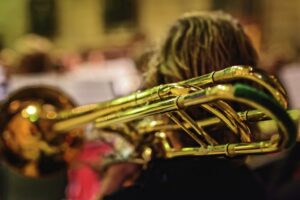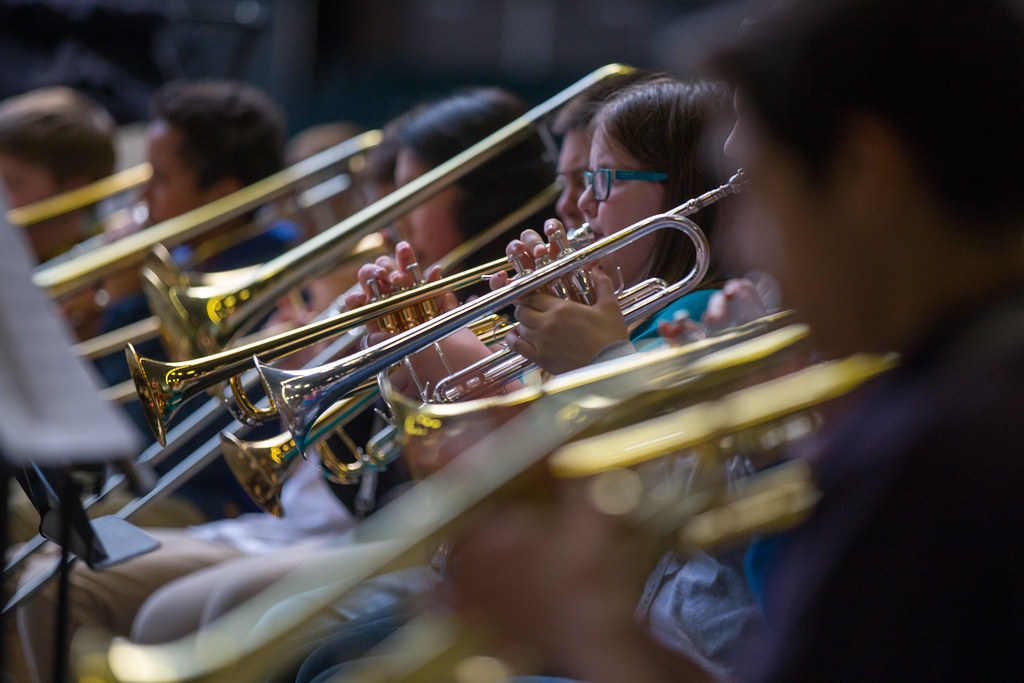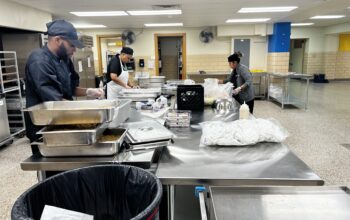Program funds instruments, lessons and other expenses which can prove costly barriers
While many parents would be proud to raise the next virtuoso violinist or orchestra conductor, the high cost of music education can present a barrier to Madison-area families looking to begin instruction in the discipline.
But students in need are not without hope, thanks to a scholarship fund hosted by the Monroe Street Arts Center that provides financial aid for those who would not otherwise have access to funding for such activities. The Claire Aubrey Roberts Scholarship Fund is named for a Madison woman who died from a rare blood disorder. It aims to “reflect the joy that the arts played in Claire's life by nurturing the talents of students whose families may not be able to financially support their artistic endeavors,” according to the MSAC website.
For area families looking to explore an interest in music and art, the scholarship represents an opportunity that many would otherwise go without, said Monroe Street Arts Center Director Carey Zawlocki. The lack of music opportunities for some students, as well as lingering effects from the pandemic have led to a significant rise in applications to the scholarship in recent months, Zawlocki said.
The impact of studying music on a child’s development can be felt across numerous areas of their schooling, she said.
“There’s lots of research out there that supports the fact that music education enhances the whole child rather than specific academics, but it also raises their standardized test scores and other aspects of the education and academic achievement outside of music,” Zawlocki said.
Additionally, the individualized approach behind music lessons allows for students and teachers to create unique relationships not found in a traditional classroom setting, she said.
“There are lots of students who will start here at 4 or 5 years old and continue with an instructor that they feel connected to over several years, so those instructors get the opportunity to build a relationship with that student over time which is pretty amazing to see,” she said.

But from instrument prices and maintenance, to lesson fees and instructional material expenses, the costs of getting a young student involved in music often presents a barrier, said private music teacher Mark Wurzelbacher.
“There are probably people who would like to have [music] lessons, but decide they can’t because of these mostly true assumptions that it is a very expensive endeavor and is not something that's often subsidized,” Wurzelbacher said.
Entry-level rental plans can cost up to $506 per year for instruments like an alto saxophone and $607 per year for a cello at Madison-area instrument store Ward-Brodt Music. These prices only increase if one looks to buy an instrument — as a new percussion kit can cost as much as $700 and a new trombone can cost $800 or more. These costs do not include lessons, instructional materials and accessories such as mouthpieces and cleaning supplies, all of which can add on hundreds of dollars to the cost of music education.
Educators such as Madison Metropolitan School District music teacher Anthony Cao recognize these challenges and work to support their students monetarily, but have few resources to work with without outside assistance.
“The schools are doing everything they can. As a teacher, I’m doing everything I can,” Cao said.
He noted, however, that teachers can only do so much on their own.
“Our teachers are scrappy and creative in thinking of new ways to get their hands on grants and new instruments and fixing old instruments, finding ways to get kids access to the things they need, but that’s on a teacher-to-teacher level. We need to work harder systemically to make that kind of stuff happen from the top down,” he said.
Though the Monroe Street Arts Center tries to support as many students as possible, Zawlocki said limited resources can keep the scholarship fund from accommodating all applicants.
“We’re constantly looking for grants and donations and opportunities to refill our scholarship fund so that we can continue to offer it to more and more students,” she said.
Though local programs are working hard to ensure all students receive access to the education they deserve, some acknowledge that there is more work to be done in making music affordable for all. For Cao, he believes that Madison is trending in the right direction.
“I think Madison is doing a pretty good job,” Cao said. “There are a lot of smart people in the school district who see what the issues are and are trying to combat them, but there is always more work to be done.”





